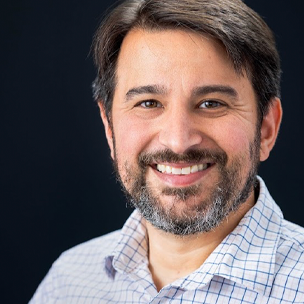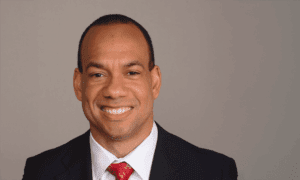If you’ve ever spent time in downtown Fayetteville, you may have noticed a stone monument on the northwest corner of the old courthouse lawn. Or, like me for years, you never noticed it because of its small size.
This article is the first in an occasional series exploring the legacy of the Confederacy in our area and how its shadow still shapes our community today. We’ll start with that modest courthouse monument: its history, the group that placed it there, and the questions it raises for us now.
Before we begin, I want to extend a special thanks to our county historian, John Lynch, for his invaluable research and insight into the Fayette-specific elements of this story. His help has been essential to this article and those to follow.
What Is The Small Stone Monument And Its History?
The memorial marker at the Fayette County Courthouse is a simple stone with a plaque that prominently reads: “In memory of the Confederate heroes of Fayette County 1861-1865.”
How did this Confederate monument come to be? Nearly 70 years after the Civil War, it was installed on April 26th, 1934. That date wasn’t random. April 26th was Confederate Memorial Day in Georgia at the time.
The monument was placed by the Fayette County chapter of the United Daughters of the Confederacy (UDC for short—more on them shortly) with support from a variety of donors, civic leaders such as former Georgia Governor Hugh Manson Dorsey, and community groups like the local branch of the Girl Scouts of America. In 1934, any surviving Confederate veterans would have been in their 90s, and the monument was seen by many in the community as a way to honor the local men who had served in the war. This act of commemoration was part of a broader trend across Georgia and other former Confederate states where towns erected monuments decades after the war.
Unlike some nearby municipalities where only secondhand accounts remain, Fayette County’s dedication ceremony was covered in detail by the local press. When the formal unveiling took place on the courthouse lawn, several hundred people gathered for the occasion.
The program began with County Historian Colonel Lester C. Dickson introducing Colonel W. H. Venable, who presented the monument constructed by an anonymous donor. UDC chapter president Nell Dickson accepted the gift while Charles D. Redwine and B. D. Murphy received it on behalf of the City of Fayetteville. Former Governor Dorsey delivered the keynote address.
The monument was then unveiled by Mrs. Katie Lou Phillips, daughter of J. E. Travis, who was at the time the youngest living Confederate veteran in Fayette County. As the covering was removed and the stone revealed, the crowd applauded. According to The Fayetteville Enterprise, the “plain and unpretentious stone” was a tribute to the 1,200 men and boys from Fayette County who “gave all” for the Confederate cause.
The intent behind the monument had been publicly shared months earlier. On November 3, 1933, the UDC chapter placed a notice in the local newspaper outlining the message they hoped the memorial would convey:
“The granite slab will carry a bronze tablet, suitably inscribed to forever commemorate the valiant services of those heroes in gray who marched away from Fayette County to lay their all upon the altar of the Lost Cause. All who came back returned to face the tragic era of reconstruction, and the Herculean task of building a new civilization on the ashes of the old.”
Who Were the United Daughters Of The Confederacy And Why Did They Place It There?
The Confederate marker placed quite literally at the heart of Fayette County didn’t just appear out of thin air. It was deliberately placed by the UDC.
The UDC is an American women’s heritage organization founded in 1894 in Nashville for descendants of those who served the Confederacy. By the early 20th century, chapters had spread across the South, including here in Fayette County.
While their stated mission was to commemorate and honor Confederate veterans, the UDC’s activities extended beyond remembrance. They played a central role in shaping how the Civil War was interpreted and remembered in Southern communities.
Today, many historians like Karen L. Cox (author of Dixie’s Daughters), Caroline Janney (author of Remembering the Civil War), and Gaines M. Foster (author of Ghosts Of The Confederacy) condemn the UDC for promoting a distorted version of history. To summarize some of the major criticisms, historians point to the following:
Influenced Southern Education For Decades
Perhaps the most far-reaching impact of the UDC came through their influence on education. Recognizing the power of shaping young minds, the UDC devoted significant resources to lobbying for certain textbooks in Southern schools. Many of these textbooks eliminated or softened references to slavery, presented secession as a constitutional right, and framed Reconstruction as a time of chaos and misrule. Textbook authors were often explicitly warned not to criticize Confederate leaders or question the morality of the Southern cause.
As a result, generations of students (including many living today) grew up learning a one-sided and incomplete version of Civil War history. In many communities, this version remained dominant well into the late 20th century, shaping not just individual perspectives but entire regional identities.
Promoted The “Lost Cause” Narrative
With education serving as the foundation, the UDC actively promoted the “Lost Cause” narrative, which is a revisionist interpretation of the Civil War that cast the Confederacy in a noble light. According to this telling, the war wasn’t fought over slavery but over constitutional rights, state sovereignty, and Southern honor. The Confederacy’s defeat became not a repudiation of its values but a tragic end to a righteous struggle.
By elevating this narrative, the UDC offered white Southerners a way to preserve regional identity while avoiding accountability for the true causes and consequences of the war.
Downplayed Or Whitewashed Slavery
Central to the UDC’s version of history was the deliberate whitewashing of slavery. In their literature, speeches, and educational materials, slavery was often depicted as a benign, even paternalistic institution. Enslaved people were described as loyal and well-treated, and their lived experiences of violence and oppression were intentionally erased from the record.
This was not merely a case of omission. Confederate leaders made it explicitly clear that the Confederacy was founded on the principle of preserving slavery. (For example, Vice President Alexander Stephens stated in his 1861 Cornerstone Speech: “Its foundations are laid, its cornerstone rests, upon the great truth that the negro is not equal to the white man… that slavery… is his natural and normal condition.”) Yet the UDC dismissed this reality in favor of a mythologized past where the war had little to do with race or human bondage.
By minimizing slavery’s role, the UDC absolved the Confederacy of its central offense and offered white Southerners a comforting narrative: that their ancestors had fought for honor, not for oppression. But this version of history denied the cruelty of slavery and erased the humanity and suffering of the millions of enslaved people.
Portrayed Confederate Leaders And Soldiers As Patriots
Building on this whitewashed history, the UDC portrayed Confederate leaders—especially figures like Robert E. Lee and Jefferson Davis—as paragons of virtue. In textbooks, speeches, and on memorial plaques, these men were cast as honorable statesmen and moral exemplars, defined more by loyalty and character than by their role in leading a government built on slavery.
The same treatment was extended to the rank-and-file Confederate soldier who was idealized as a brave and selfless patriot. Rarely, if ever, did these portrayals mention what the soldiers were actually fighting to defend. Instead, the UDC framed them as victims of Northern aggression and tragic heroes of a lost but noble cause.
Erected Monuments As Political And Cultural Messages
These skewed narratives weren’t confined to textbooks and speeches. They were carved into stone and placed in the most visible spaces of Southern life. One of the most enduring legacies of the UDC is the network of Confederate monuments they helped erect across the South. These were not spontaneous community memorials. They were deliberate, organized efforts to shape public memory and public power.
The majority of these monuments were installed between 1890 and 1920 during the rise of Jim Crow laws and the institutionalization of racial segregation. Another wave came in the 1950s and 1960s as the Civil Rights Movement gained momentum. In both cases, the timing was not accidental.
By placing these monuments in front of courthouses, in town squares, and on state capitol grounds, the UDC reinforced a message: that the legacy of the Confederacy still governed public life. These markers weren’t simply about honoring the past. They were about controlling the narrative in the present.
Seen in this light, the monuments were more than memorials. They were instruments of cultural messaging and silent, permanent symbols asserting who held power and whose version of history would be remembered.
What Should We Make Of Our Memorial?
Now we come to a big question: Given all this history, what should we make of the Confederate marker on our courthouse lawn?
There are a few ways to look at it, and each deserves thoughtful consideration.
First, it’s fair to say that many people likely don’t know the marker is even there. Unlike a towering statue or prominent monument, this one is modest in size. Unless you’re specifically looking for it, you might pass by the courthouse without noticing it at all. In that sense, it’s almost hidden in plain sight.
Among those who are aware of it, some will argue it is simply a piece of history honoring local soldiers. It wasn’t intended to offend anyone but to remember the young men from Fayette County who marched off to war in the 1860s with many never returning. The plaque lists no names but calls them “heroes” for the sacrifices they made on the battlefield. For some, removing or denouncing the marker would feel like an insult to those soldiers’ descendants, or even an attempt to “erase history.” You might hear someone say, “My great-great-grandfather fought in the Confederate army. Not because he hated anyone, but because that’s what everyone here did. This marker just recognizes him and his comrades.” In this view, the intent behind the monument was not to celebrate slavery or intimidate anyone, but simply to honor Fayette’s war dead.
But intent and impact aren’t always the same.
Even if we grant that the 1934 community meant no harm in erecting the marker, we still have to consider what it represents and communicates in 2025. This is where the difference between celebrating history and contextualizing it becomes important.
The monument, as it stands, clearly celebrates Confederate soldiers as “heroes”—full stop. It offers no further explanation. It doesn’t mention why the war happened, what side those soldiers fought for, or the cause they served. In effect, it invites the public to honor them without grappling with any of the historical or moral complexities behind their service.
For many people today, that’s a problem. It can feel as if the county is officially endorsing a one-sided, sanitized memory of the Confederacy that omits the core issue at stake: the preservation of enslaving people kidnapped from Africa.
One way to address this is through contextualization. Rather than leaving the monument untouched as a silent tribute or removing it in anger, contextualization adds information and perspective, transforming the marker into a teaching tool.
For example, an explanatory plaque placed nearby might say something like:
“This monument was placed in 1934 by the Fayette County chapter of the United Daughters of the Confederacy to honor local Confederate soldiers. It was part of a broader effort across the South to commemorate the Civil War and shape public memory during the Jim Crow era. While individuals joined the Confederate army for various reasons, the Confederacy itself was founded to preserve slavery, as stated in its leaders’ own words. Today, this marker remains as a historical artifact and a reminder of how communities remember and interpret the past.”
That’s just one imagined example of what contextual text might convey. The point is to tell the full story: Yes, local Confederate soldiers are part of our history, and many may have showed personal bravery and endured great hardship. But they also fought on behalf of a cause that we now understand was fundamentally about preserving slavery and white supremacy.
Finally, it’s also worth acknowledging the moral complexity associated with the memorialized soldiers. History is rarely clean or simple. Many of the Confederate soldiers from Fayette County were likely poor farmers or young men with limited education and little say in political matters. It’s possible some didn’t fully grasp the broader causes of secession and were swept up in messages of duty, loyalty, or defense of home. Most Confederate soldiers did not personally own slaves since slaveholders made up a minority of the ranks. Some were likely misled by leaders who framed the war in terms of constitutional rights or “defending Georgia from invasion.”
We can feel a measure of empathy for those men as products of their time and circumstance. But this is crucial—regardless of individual motives, our boys and young men from Fayette County were fighting to uphold a nation explicitly founded to preserve a system that kept Black people in bondage.
That’s the hard truth we shouldn’t ignore.
What Do You Think?
We’ve traced the history of the marker, the motivations behind it, and the broader narrative it represents. So now I turn it to you: What should we do? Do you feel the memorial is a respectful tribute to local history that ought to remain as-is? Or do you think we should add context or even remove it from the courthouse grounds?
These aren’t easy questions, but it’s healthy for us to grapple with our history openly and honestly.
That’s the goal of this series—to shine a light on the legacy of the Confederacy in our community and to encourage thoughtful reflection on what the past means for us today. As William Faulkner once wrote, “The past is never dead. It’s not even past.”
Feel free to share your thoughts about the courthouse Confederate marker in the comments or (better yet) by sending a letter to [email protected].












Leave a Comment
You must be logged in to post a comment.